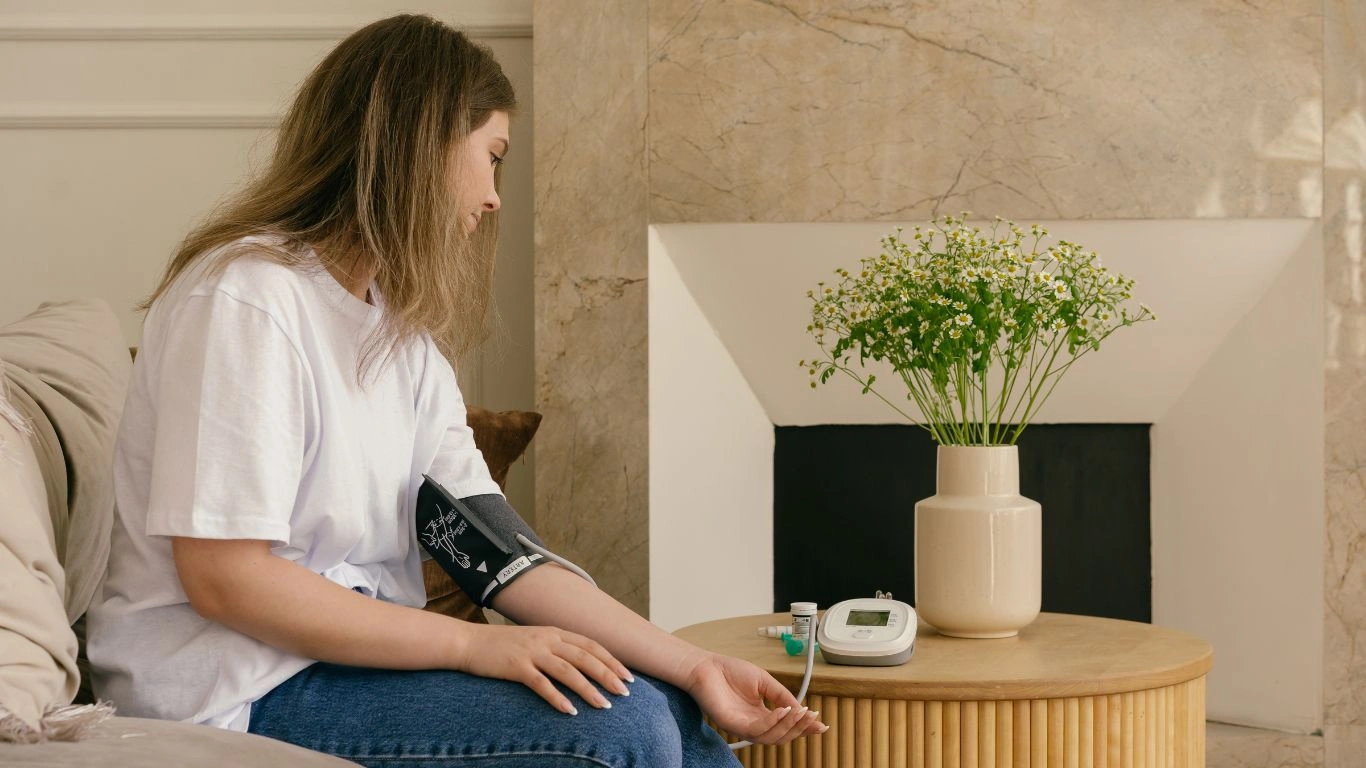How Air Purifiers Help Asthma Sufferers Breathe Easy and Live Well
As someone who’s worked in internal medicine with a focus on hypertension management, I’ve seen how asthma can complicate things. And when it comes to managing asthma, especially for those who struggle with triggers in their homes, an often overlooked yet incredibly effective solution is the use of air purifiers. You might be wondering: How exactly do air purifiers help asthma sufferers? Well, air purifiers can actually make a significant difference in improving air quality and reducing asthma symptoms. Let me explain why these devices should be a part of every asthma sufferer’s home care routine.
Understanding Asthma Triggers and the Role of Clean Air
When you have asthma, the condition is typically characterized by inflammation in the airways, making it difficult to breathe. The airways can constrict when exposed to certain triggers, leading to symptoms like coughing, wheezing, shortness of breath, and tightness in the chest. These triggers vary from person to person but can include things like allergens (pollen, dust mites, pet dander), smoke, strong odors, and even changes in the weather.
The air inside our homes can be a breeding ground for these very triggers, which is why keeping it clean and free of allergens is crucial. And that’s where air purifiers come in. Think of air purifiers as your home’s personal defense system against those pesky asthma triggers. They work by filtering out harmful particles in the air, helping to make your indoor environment safer and more breathable.
What Exactly Does an Air Purifier Do for Asthma Sufferers?
At its core, an air purifier is designed to remove particles, pollutants, and allergens from the air. Different models of air purifiers use various methods—such as HEPA (High-Efficiency Particulate Air) filters, carbon filters, or UV light systems—to trap and neutralize harmful airborne particles. The main aim is to create cleaner air, which can help reduce the frequency and severity of asthma flare-ups. Here’s a breakdown of how they help:
- Dust and Pet Dander Removal: One of the most common asthma triggers is dust, which can accumulate in the air and on surfaces. Pet dander is another major culprit, especially for pet owners. Air purifiers with HEPA filters can trap microscopic particles like these, preventing them from circulating in your home and triggering asthma symptoms.
- Elimination of Pollen: Pollen is another big asthma trigger, particularly during certain seasons. Air purifiers can reduce the pollen count indoors, giving you some much-needed relief during peak pollen times.
- Reduction of Mold Spores and Mildew: Mold can be a sneaky trigger for asthma. In damp areas of the house, like bathrooms or basements, mold and mildew can spread easily. Air purifiers help reduce the concentration of these spores, preventing them from becoming a problem.
- Removal of Smoke and VOCs: Whether it’s smoke from a fireplace, cooking, or even cigarette smoke, exposure to airborne pollutants like these can irritate the airways. Some air purifiers come with activated carbon filters that can absorb odors and chemicals, including volatile organic compounds (VOCs), creating a cleaner environment.
Personal Experience: How an Air Purifier Changed My Own Routine
As someone who spends a lot of time in clinical environments, I’m no stranger to the importance of clean air—both for my patients and myself. Over the years, I’ve had the chance to recommend air purifiers to many asthma patients, but I didn’t realize how much of a difference they could make in my own life until I started using one in my home.
At first, I wasn’t sure if it was worth the investment, but after just a few weeks of using an air purifier in my bedroom, I noticed I was waking up with fewer respiratory issues and feeling more refreshed. My house tends to get dusty, and I had no idea how much dust was lingering in the air. Seeing the amount of dirt in the filter after a few days was a little surprising, but it quickly became clear that this device was doing its job in improving my indoor air quality.
Choosing the Right Air Purifier for Asthma
Now, if you’re sold on the idea of using an air purifier, the next step is finding the right one. Not all air purifiers are created equal, so here are some things to consider:
- HEPA Filter: If you have asthma, you’ll want to look for an air purifier with a true HEPA filter. These filters can trap particles as small as 0.3 microns, which includes most common asthma triggers like dust, pet dander, and pollen.
- Size of the Room: The size of your room will determine how powerful the air purifier needs to be. Check the square footage ratings and make sure the purifier is designed to handle the room size where it will be placed.
- Filter Maintenance: Depending on the model, you may need to replace or clean the filters every few months. Make sure you understand the maintenance required so that the purifier continues to operate at its best.
- Additional Features: Some air purifiers come with added features like air quality sensors, which will automatically adjust the filtration power based on the air quality in the room. This can be a helpful bonus for asthma sufferers, as it ensures the purifier is always working hard when needed.
How to Maximize the Benefits of Your Air Purifier
Once you’ve chosen your air purifier, it’s important to set it up correctly to get the maximum benefit. Place it in a spot where air can circulate freely—ideally near where you spend the most time, like your bedroom or living room. Keeping windows and doors closed while the purifier is running will help prevent external pollutants from entering and reducing the efficiency of the device. Also, don’t forget to clean the purifier and replace the filters regularly, or else it won’t be as effective at cleaning the air.


Can Air Purifiers Completely Eliminate Asthma Symptoms?
While air purifiers can significantly reduce asthma symptoms by improving air quality, it’s important to understand that they’re not a cure for asthma. They are a tool to help manage the condition and reduce exposure to triggers. The goal is to work with your healthcare provider to create a comprehensive asthma management plan that includes medication, lifestyle changes, and environmental controls—air purifiers being a key part of the equation.
How Air Purifiers Can Enhance Asthma Control in Your Home
Now that you have a clearer idea of how air purifiers work, let’s dive deeper into the specific benefits they offer for asthma management. While asthma symptoms can vary from person to person, reducing exposure to common indoor triggers can be a game-changer in managing the condition. In my experience, many patients who struggle with asthma have found that improving air quality in their homes not only alleviates symptoms but also helps them feel more in control of their health.
Creating a Safer Environment: How Air Purifiers Remove Triggers
One of the main reasons asthma sufferers turn to air purifiers is to reduce the number of asthma triggers floating around in their homes. As I’ve mentioned earlier, common triggers include pet dander, dust mites, pollen, mold spores, and smoke—things that you might not even be aware of in your environment. For example, even if you don’t have pets, pet dander can still find its way into your living space through visitors or outside air. This is where air purifiers come into play, especially models equipped with high-quality HEPA filters.
When I started using an air purifier in my own home, I noticed a significant reduction in symptoms like throat irritation and coughing during the night, even though I didn’t have any obvious asthma triggers. I was surprised at the amount of dust that the air purifier was catching—it was a real eye-opener. By filtering out particles in the air, it prevented allergens from triggering an inflammatory response in my airways, making it much easier to breathe, especially at night when asthma symptoms often worsen.
Here’s a breakdown of how each of these key triggers is handled by air purifiers:
- Pet Dander: Even if you’re not a pet owner, pet dander can be carried through the air. Air purifiers can effectively capture these tiny particles, reducing the chance of allergic reactions or asthma attacks caused by them.
- Dust Mites: Dust mites thrive in warm, humid environments and are found in bedding, upholstery, and carpets. Air purifiers with HEPA filters can trap dust mites and prevent them from becoming airborne, which is crucial for asthma sufferers.
- Pollen: During high pollen seasons, the air can be full of tiny grains that can trigger asthma symptoms. Air purifiers can help reduce the amount of pollen in the air, offering relief during allergy season.
- Smoke and Chemicals: Air purifiers with activated carbon filters are great at capturing smoke, odors, and VOCs (volatile organic compounds) from cleaning products, paint, or cooking. This is particularly important for those who live in urban areas or near smoking environments.

Can Air Purifiers Help Reduce Asthma Medication Dependency?
One question I frequently get asked is whether using an air purifier can reduce the need for asthma medication. While air purifiers are not a replacement for prescribed asthma medications, they can definitely complement your treatment plan by reducing your exposure to triggers. In fact, some patients have told me that they’ve been able to reduce the frequency of their rescue inhaler use after installing an air purifier in their homes. This, of course, isn’t the case for everyone, but it’s something worth exploring if you’re an asthma sufferer.
In my practice, I’ve seen how air purifiers can contribute to a more stable asthma condition. For example, one patient, a mother of two young children with asthma, noticed her kids were coughing less at night after she started running an air purifier in their shared bedroom. While the kids still needed their inhalers for emergencies, their asthma attacks became less frequent, and their reliance on the inhalers decreased as they were exposed to fewer airborne triggers.
By cleaning the air, air purifiers can reduce the severity of asthma symptoms, which may allow you to lower the dose of medication in consultation with your healthcare provider. However, it’s essential to stress that medication should never be stopped or reduced without professional guidance.
Air Purifiers: A Practical Solution for Asthma Management at Home
As a physician, I’ve seen firsthand the relief that many asthma sufferers experience when they create a cleaner indoor environment. If you’ve ever walked into a house that smells musty or felt the tickle of dust in the air, you know that these environmental factors can trigger discomfort. Asthma sufferers, in particular, are more sensitive to these changes. I recommend air purifiers not just for their ability to filter out physical irritants, but also for their impact on improving overall air quality and making the home feel more comfortable and breathable.
It’s not just about reducing allergens—air purifiers also contribute to better overall respiratory health. In homes with poor air quality, people tend to breathe in more pollutants, which can lead to chronic irritation in the lungs and exacerbate asthma symptoms over time. The simple act of running an air purifier can help filter out harmful particles, leaving you with fresher, cleaner air that feels lighter to breathe.
And let’s not forget the psychological benefit of knowing you’re doing everything you can to manage your asthma. When asthma symptoms are under control, people tend to feel more empowered and less anxious. In my experience, patients who have air purifiers report feeling more in charge of their asthma management, which is a crucial factor in long-term care.
What’s the Best Placement for Your Air Purifier?
Once you’ve invested in an air purifier, it’s important to position it correctly in your home to get the most out of it. In my practice, I often remind patients that the location of the air purifier can make a significant difference in how effective it is. Here are a few tips on the best placement:
- Keep It In the Bedroom: Many asthma sufferers experience worse symptoms during the night. Placing an air purifier next to your bed or in the bedroom can help keep the air clean while you sleep. Make sure to leave the door closed to prevent outside air from diluting the purified air inside.
- Central Location: If possible, place your air purifier in a central location in the room where it can circulate the air evenly. Avoid putting it in a corner, where it won’t be as effective at cleaning the air.
- Near the Source of Pollutants: If you know certain areas of your home are more prone to dust, mold, or smoke—such as kitchens or bathrooms—placing an air purifier nearby can help address those specific issues directly.

How Often Should You Replace the Filters?
Just like any appliance, air purifiers need a little maintenance to keep them running efficiently. The most important aspect of air purifier maintenance is changing the filters. Most air purifiers come with instructions on how often to replace the filters, but a general rule of thumb is every 3-6 months, depending on usage. Some purifiers have indicator lights that will tell you when it’s time to change the filter. This is important because clogged filters won’t be as effective at trapping allergens and other pollutants, which can lead to reduced air quality.
Replacing the filters regularly ensures your air purifier is doing its job properly, so don’t overlook this step. It’s a small effort that pays off in the long run by keeping the air in your home cleaner and fresher.

Air Purifiers: A Long-Term Solution for Asthma Management
As we wrap up our deep dive into how air purifiers can help asthma sufferers, it’s important to emphasize that these devices aren’t just a quick fix. They’re a long-term solution that, when used consistently and properly, can significantly improve the quality of life for those living with asthma. Personally, I’ve seen patients whose asthma symptoms become much more manageable once they’ve integrated air purifiers into their daily routines. It’s not just about symptom relief—it’s about offering a more breathable environment that reduces the overall strain asthma can have on a person’s life.
The Long-Term Benefits of Clean Air for Asthma Sufferers
When we think about asthma, it’s easy to focus on immediate triggers like seasonal allergies, exposure to smoke, or pet dander. However, asthma is a chronic condition, and managing it over time requires ongoing attention to both the triggers and the overall environment. Using an air purifier consistently can bring long-term benefits beyond just immediate symptom relief. Here are some key benefits I’ve noticed:
- Reduced Frequency of Flare-ups: When the air is cleaner, asthma sufferers are less likely to experience frequent flare-ups. This leads to fewer missed workdays, fewer emergency room visits, and an overall better quality of life.
- Improved Sleep Quality: For many asthma patients, symptoms tend to worsen at night, leading to disrupted sleep. By using an air purifier, you can ensure that the air in your bedroom is cleaner, which can help improve your sleep quality and reduce nighttime asthma symptoms.
- Better Control Over Environmental Factors: As asthma sufferers, we can’t control the weather or air pollution outside, but with the right air purifier, we can take control of the air inside our homes. This gives individuals more confidence in managing their condition and helps reduce the anxiety associated with asthma.
- Less Reliance on Medication: Though air purifiers aren’t a replacement for prescribed asthma treatments, reducing exposure to environmental triggers can mean less need for rescue inhalers or frequent doses of maintenance medications. As a physician, I always remind patients to consult with their healthcare provider before making any changes to their medication regimen, but cleaner air can certainly complement their existing treatment plan.

Making the Most of Your Air Purifier: Best Practices and Tips
Now that you understand the benefits of air purifiers for asthma, let’s talk about how to get the most out of your device. It’s not just about choosing the right model—it’s about using it effectively and integrating it into your lifestyle. Here are some best practices that I’ve found to be particularly useful:
1. Keep It Running 24/7 for Optimal Air Quality
One of the biggest mistakes I’ve seen people make is only running their air purifier intermittently. Air purifiers work best when they’re continuously filtering the air. The more you run your purifier, the more effective it will be at trapping airborne particles. In my experience, keeping the purifier on at all times—especially in rooms where you spend the most time, like the bedroom or living room—can help ensure that your air stays as clean as possible. It’s a small step that makes a big difference.
2. Regularly Clean the Filter
Just as you wouldn’t drive a car without checking the oil, you shouldn’t run an air purifier without maintaining it. Over time, filters can become clogged with particles they’ve trapped, and an overstuffed filter won’t be able to work as efficiently. Clean or replace the filters on time to ensure the air purifier continues to work effectively. This is a simple task that helps extend the life of your device while maintaining its air-cleaning power.
3. Combine With Other Asthma Management Strategies
Air purifiers can be a powerful tool in managing asthma, but they work best when used alongside other strategies. For example, keep your home free of dust and clutter, wash your bedding regularly, and control humidity levels to prevent mold. I often tell my patients that asthma management is multifaceted, and air purifiers should be one part of an overall approach that includes medication, lifestyle changes, and regular check-ups with a healthcare provider.
Does an Air Purifier Really Make a Difference? Real Stories
We’ve covered a lot of ground in terms of the science behind air purifiers and how they can help asthma sufferers, but sometimes the best way to understand the impact of something is through real-life stories. I want to share a couple of anecdotes from my practice that illustrate how air purifiers have made a significant difference in the lives of asthma patients.
One patient, a middle-aged woman with moderate asthma, had been struggling with nocturnal asthma attacks for months. Despite following her prescribed medication regimen, she found herself waking up several times a night coughing and wheezing. After discussing air purifiers with her, she decided to invest in one for her bedroom. A few weeks later, she reported significant improvements—she was able to sleep through the night without needing her inhaler, and her symptoms during the day were less intense. It wasn’t a cure, but it was a noticeable improvement.
Another case involved a young family with two children who both had asthma. They had a busy household with pets and a lot of dust, and their children’s asthma was often triggered by allergens in the home. After setting up air purifiers in their bedrooms and living areas, the parents noticed their kids were coughing less frequently and required less medication to control their symptoms. The family also felt a sense of relief knowing that the air in their home was cleaner and safer for their children.
These stories demonstrate that while air purifiers aren’t a magic solution, they can significantly enhance the quality of life for asthma sufferers by reducing exposure to common allergens and pollutants.
References and Further Reading
For more detailed information about asthma management and the role of air purifiers, I recommend checking out these trusted resources:
- American Academy of Allergy, Asthma, and Immunology
- Asthma and Allergy Foundation of America
- Centers for Disease Control and Prevention (CDC) – Asthma
These organizations offer valuable insights on managing asthma and using environmental control measures like air purifiers to help reduce symptoms and improve quality of life.
Disclaimer
The information provided in this article is intended for educational purposes only. It is not a substitute for professional medical advice, diagnosis, or treatment. Always seek the advice of your physician or other qualified health provider with any questions you may have regarding a medical condition. Never disregard professional medical advice or delay seeking it because of something you read in this article. If you are considering using an air purifier for asthma management, please consult with your healthcare provider to determine if it is appropriate for your situation.


Dr. Gwenna Aazee is a board-certified Internal Medicine Physician with a special focus on hypertension management, chronic disease prevention, and patient education. With years of experience in both clinical practice and medical writing, she’s passionate about turning evidence-based medicine into accessible, actionable advice. Through her work at Healthusias.com, Dr. Aazee empowers readers to take charge of their health with confidence and clarity. Off the clock, she enjoys deep dives into nutrition research, long walks with her rescue pup, and simplifying medical jargon one article at a time.






